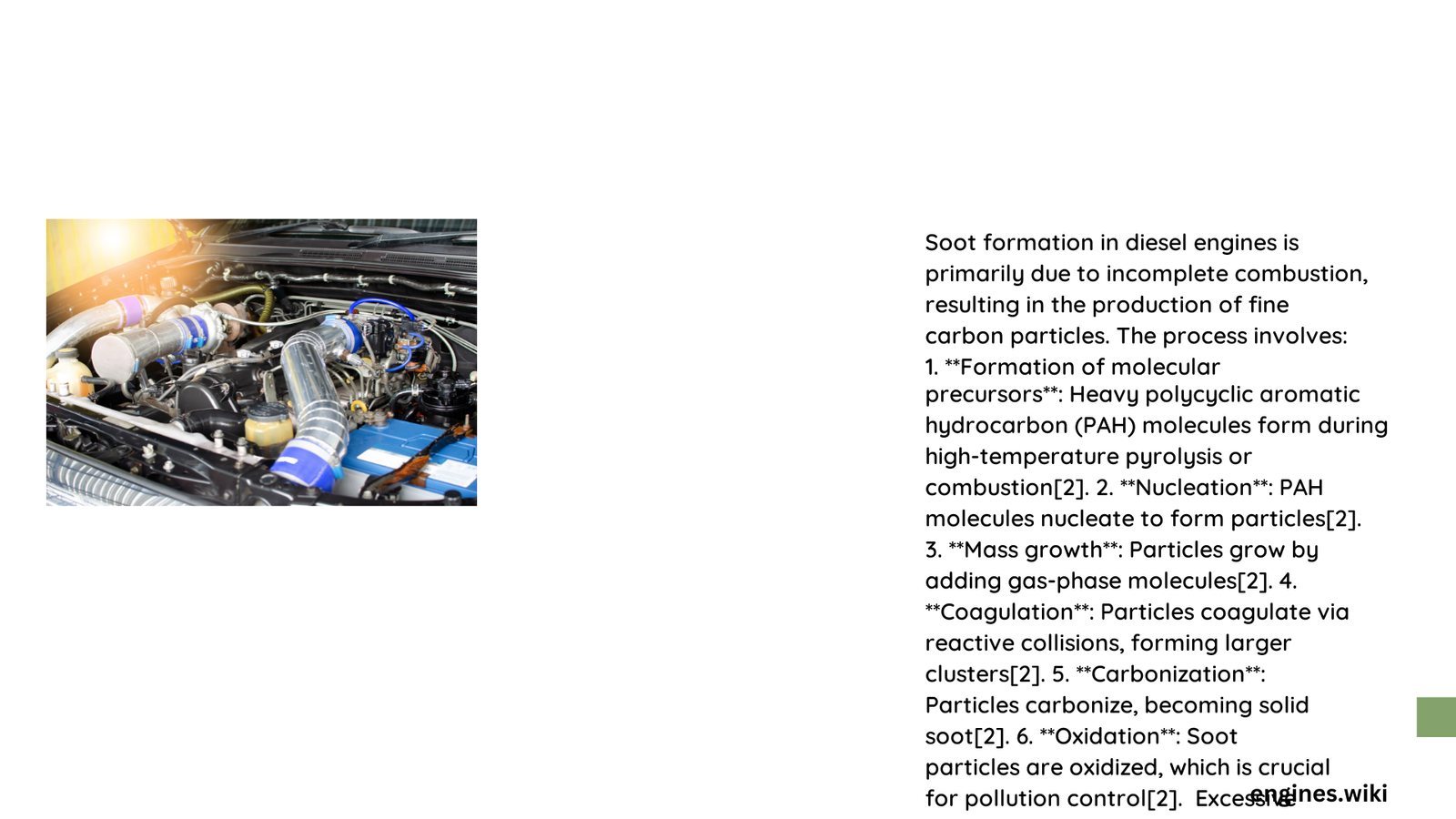Diesel engines generate complex particulate emissions through intricate chemical transformations, where hydrocarbon fuel molecules undergo pyrolysis, nucleation, and surface growth processes under high-temperature combustion conditions. These microscopic carbon particles, known as soot, emerge from incomplete fuel oxidation, significantly impacting engine efficiency, environmental emissions, and mechanical integrity.
What Triggers Soot Formation in Diesel Engines?
Chemical Pathways of Soot Generation
Soot formation represents a multifaceted phenomenon involving several critical stages:
- Pyrolysis Stage
- Hydrocarbon molecule decomposition
- Temperature range: 1500-2800 K
-
Production of smaller molecular fragments
-
Nucleation Process
- Formation of initial aromatic carbon clusters
- Transition from aliphatic to aromatic molecular structures
-
Rapid condensation of carbon species
-
Surface Growth Mechanism
- Continuous carbon atom accumulation
- Development of polycyclic aromatic hydrocarbon (PAH) structures
- Particle size progression from nanometers to micrometers
Factors Influencing Soot Development
| Parameter | Impact on Soot Formation | Significance |
|---|---|---|
| Fuel Composition | Higher carbon content increases soot potential | Critical |
| Oxygen Availability | Reduced oxygen leads to incomplete combustion | High |
| Combustion Temperature | Peak temperatures accelerate soot generation | Substantial |
| Injection Timing | Improper timing increases particulate emissions | Moderate |
How Do Diesel Engines Produce Particulate Matter?

Molecular Transformation Sequence
The soot formation process involves sophisticated molecular interactions:
- Initial Decomposition: Fuel molecules break down under extreme temperatures
- Radical Formation: Unstable carbon fragments emerge
- Cluster Aggregation: Small carbon particles merge and grow
- Oxidation Potential: Partial burning of accumulated carbon structures
Performance Implications
Soot accumulation directly impacts engine performance through:
- Reduced fuel efficiency
- Increased mechanical wear
- Compromised lubrication systems
- Higher maintenance requirements
What Are the Mitigation Strategies?
Advanced Emission Control Technologies
- Diesel Particulate Filters (DPF)
- Captures microscopic carbon particles
- Periodic regeneration cycles
-
Efficiency: 85-95% particulate reduction
-
Selective Catalytic Reduction (SCR)
- Converts nitrogen oxides into harmless nitrogen and water
- Indirectly reduces soot formation
- Improves overall combustion efficiency
Quantitative Soot Impact Assessment
Performance Metrics
- Horsepower Reduction: 3-7% per significant soot accumulation
- Fuel Efficiency Decline: Up to 5-10% with prolonged particulate buildup
- Maintenance Cost Increase: 15-25% higher with consistent soot generation
Conclusion
Understanding soot formation in diesel engines requires comprehensive analysis of chemical, thermal, and mechanical interactions. Continuous research and technological innovations remain crucial for mitigating particulate emissions and enhancing engine performance.
